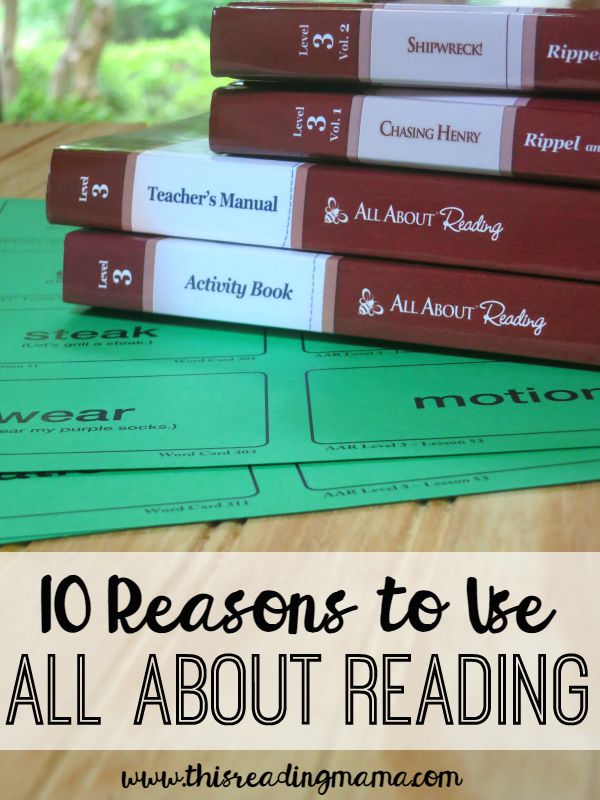
This post contains affiliate links. I was also given free material from All About Reading in exchange for a review. All opinions are my own. Please read my full disclosure policy for more information.
10 Essential Components of a Solid Reading Curriculum
- Research-Based: The curriculum is built on already existing, solid reading research. The curriculum writers did not create their own research or find only research that supports their thinking.
- Developmentally Appropriate: Instead of a “one size fits all” mentality, the writers thought about the reading development and needs of students reading on different levels.
- Systematic: While some young readers (a small minority, really) can crack the code of reading all by themselves, most cannot. A solid reading curriculum will look at the typical development of reading and comprehension skills and teach those skills in a systematic way (not haphazardly) so that gaps do not form in a child’s learning. This way, the skills learned in the last lesson serve as a foundation for the next lesson.
- Hands-On and Multisensory: This compliments hands-on. Students get to use all of their senses (or at least most of them) to help concepts “stick”.
- Well-Balanced: Reading is comprised of several different skill sets. There’s phonological awareness, phonics knowledge, fluency, and comprehension (just to name four). A well-balanced reading curriculum will help young readers grow in all of these areas, not just one or two.
- Explicit: Skills and concepts are talked about and manipulated in an explicit way so as not to leave any learning up to “chance”.
- Scaffolds/Supports the Reader: The teacher models and thinks through first while the child watches and listens. Gradually, the child is handed the steering wheel as he begins to practice and apply the skills independently.
- Lightly Scripted: While it is good to have notes and extra tips to get you through it, any curriculum that asks you to simply read a script to your child and calls that “teaching” is a BIG no-no in my book.
- Meaningful: Children aren’t just drilled on phonics skills. Those phonics skills are applied to real reading.
- Multiple Exposures: Concepts are introduced and reviewed more than one time and within several lessons (using multi-sensory techniques) so that multiple chances are given for the child to understand the concepts.
How Does All About Reading Measure Up?
All About Reading nails every single component on my top 10 list! I’d like to share my thoughts as my 2nd grade son is currently working through Level 3.
All About Reading Is Developmentally Appropriate
Designed for children who struggle to read, Marie Rippel (the creator of All About Reading) understands research-based, developmentally appropriate practice for the teaching of reading. You see, just because your child is in the third grade does not mean he is on a third grade reading level {you can read a little more about that here}. I’ve tutored many students who were reading several grade levels below their actual grade level.
Leveling a curriculum with, “Grade 1” or “Grade 2” would not be an accurate reflection of the student’s abilities. I love that All About Reading has developed a quick placement test that asks pointed, specific questions to get you thinking about what your child does or does not understand about reading so you can more accurately figure out what level you would need to buy. (You can find this placement test on All About Reading‘s website when you click on any of the levels.) Doing this gives you a better overall picture of your learner’s abilities; not just a blanket grade level.
All About Reading Supports the Learner
The Teacher’s Manual included in the kit shows you, as the teacher, how to explicitly teach the phonics skills needed for children to read the texts.
 Clearly marked in the Teacher’s Manual are helpful tips and ways to model the learning for the child, like what to do when a child misreads a word. Also included are questions you can ask the child to see if he understands. Once he demonstrates his knowledge through hands-on manipulatives and some worksheet exercises, he applies them to real reading, making learning meaningful.
Clearly marked in the Teacher’s Manual are helpful tips and ways to model the learning for the child, like what to do when a child misreads a word. Also included are questions you can ask the child to see if he understands. Once he demonstrates his knowledge through hands-on manipulatives and some worksheet exercises, he applies them to real reading, making learning meaningful.
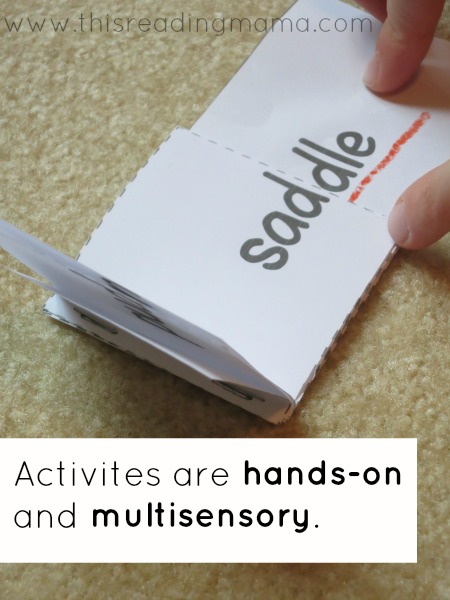 New lessons start with review from past lessons, which makes All About Reading systematic. These reviews may take the form of hands-on manipulatives, flash cards, sorts, or interactive worksheets. Reviewing material in different ways also ensures that the learner gets multiple exposure to the same content, building those connections to the concepts stronger.
New lessons start with review from past lessons, which makes All About Reading systematic. These reviews may take the form of hands-on manipulatives, flash cards, sorts, or interactive worksheets. Reviewing material in different ways also ensures that the learner gets multiple exposure to the same content, building those connections to the concepts stronger.
All About Reading Provides Hands-On Activities
One of my favorite things about All About Reading are the hands-on activities. While there are some worksheets included in the Student’s Book, many of them are interactive sorts or flip books kids can create.
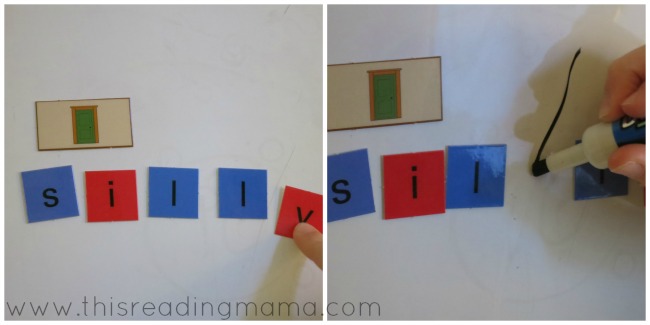 The magnetic letter tiles were my son’s favorite. With these, he could manipulate the letters of words. Through touching, seeing, and hearing the sounds in these words all at one time, building these took on a multisensory approach. Not only that, but the activities were meaningful and fun for him.
The magnetic letter tiles were my son’s favorite. With these, he could manipulate the letters of words. Through touching, seeing, and hearing the sounds in these words all at one time, building these took on a multisensory approach. Not only that, but the activities were meaningful and fun for him.
All About Reading Encourages Kids to Apply their Knowledge
Once phonics concepts are introduced to and played with by students, those same skills are APPLIED to real reading. Included in All About Reading are real stories that kids can read themselves.
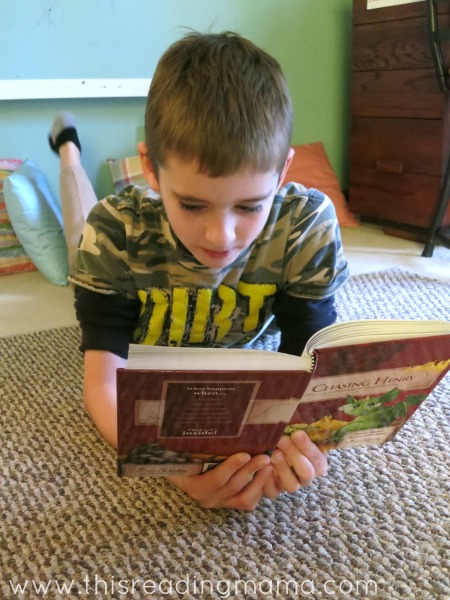 While the pictures are not in color, the story lines and characters are sure to get your child’s attention. Each story features the phonics and word skills the child manipulated with those magnetic letter tiles and interactive workbook pages.
While the pictures are not in color, the story lines and characters are sure to get your child’s attention. Each story features the phonics and word skills the child manipulated with those magnetic letter tiles and interactive workbook pages.
All About Reading Supports Reading Comprehension
I’ve said it before. Reading equals thinking. But in order for kids to think, the quality of the text has to be “think-able”. I especially appreciate that the integrity of the story line in the reading book was not sacrificed by a confusing decodable text, written just to squeeze in as many new phonics words as possible! This makes for a story that can actually be read AND comprehended by readers.
Before kids read, the Teacher’s Manual encourages you to teach vocabulary and tap into a child’s prior knowledge. Without this before reading step, comprehension can be greatly compromised. The suggested comprehension questions are based on research. Instead of asking lower level questions that just require kids to remember something, the questions provoke kids to THINK about what they’ve just read. Students are asked to do things like compare and contrast characters or invent a different ending to the story.
When Choosing a Reading Curricula, Consider This
One reading curriculum, no matter how well put-together or research-based, will not fit every learner the same. In her introduction, Marie is quick to note that, “every child and situation is unique…feel free to adjust” lessons, lesson times, or time spent on a particular skill. That’s the beauty of lightly scripted lesson plans. You’re not mandated to say this now and do that later. You have the freedom to adapt it for your own learner. Even (dare I say it) skip an activity if it causes a road block for your child.
The makers of All About Reading know that buying reading curriculum is a big step and can be rather scary. That’s why All About Reading comes with FREE lifetime support. And… if you purchase AAR through their website, you have one full year to try it out! If, for some reason, it does not meet the needs of your child, you can return the materials within one year for a full refund of purchase price. Now, that’s an amazing guarantee, don’t you think?!?
So, what are your top 10 components of a reading curriculum? If the list is anything like mine, you are sure to like All About Reading!
~Becky
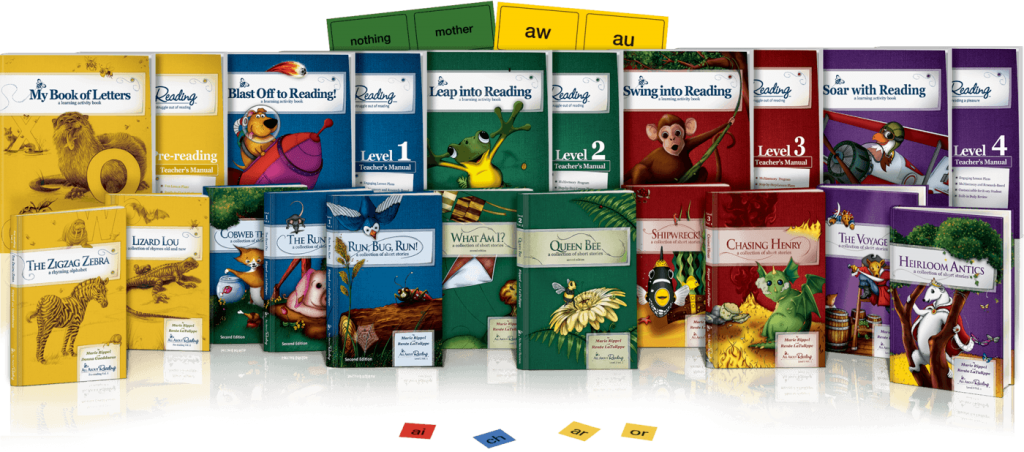
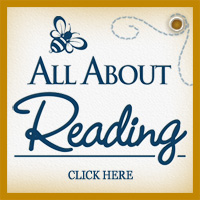
Thanks for this review, Becky. I’ve been very curious about this curriculum!
You’re welcome! 🙂
Thanks. I’m very interested in this curriculum. Do you know where I can learn about how all about reading and all about spelling work together? Is it possible to use just one?
From what I can tell (and I’m not an expert at AA Spelling), if you order the Reading Interactive Kit together with AA Reading, you don’t need to necessarily order both. AA Reading has a lot of spelling instruction built in to it. Hope that helps. 🙂
We use and LOVE BOTH AAR and AAS! They TOTALLY and COMPLETELY go hand in hand! You only need to buy the Interactive kit once. While MUCH spelling is built into the reading program (and a lot comes naturally when learning the reading the way they present it), AAS is WONDERFUL at teaching rules to help you think about what you are spelling in ways that make sense to kids! My Kinder, 2nd and 4th graders ALL use it and are ALL succeeding! My 4th grader did not start it til this year. I made her start at Level 1. We FLEW through levels 1 and 2 and she is currently working through Level 3. But let me tell you…her spelling has improved TEN-FOLD since we started! I CANNOT recommend these programs ENOUGH!
Thank you for your input, Kristi. 🙂
I’ve read your reviews on Snap! and AAR and I am torn as to which I should go with…any advice? My daughter is going into 2nd grade. We used Sonday System 1 last year. It seemed to work well enough, but neither of us enjoyed it and I think my daughter is a reluctant reader. She guesses at a lot/most of the words except for the basic ones. I know gaps we need to fill are in the syllable counting and decoding longer words. She HATES writing right now. I think she would probably love the tablet aspect of Snap! but I don’t really want her to have so much screen time since she is already SO into electronics (I limit it big time, but if I didn’t that’s all she would do). Thank you for your help, this process is so overwhelming sometimes!
I’m going to email you, if that’s okay.
Loved the review! My 2nd grader has recently been diagnosed with dyslexia. I am hoping to use this program daily as a parent tutor to supplement her schooling (we do not homeschool). Do you think that would work? Any opinion about this program versus Wilson or Barton. I hope this reaches you, since the comments are from 2014 and 2015!
Thanks!
Sorry I’m just seeing your comment…2 months later!! I think anything you can get your hands on that meets the needs of your 2nd grader and is created with the Orton-Gillingham approach is fantastic. All of the ones you’ve mentioned are, including AAR. My oldest son start with Wilson in the 3rd grade when he started going to a special school and it was amazing how much he progressed with that, too. I wish I could give you a definitive answer on the exact one to buy…
My Kindergarten child is struggling. They are starting popcorn words. He is still working on learning letter sounds and printing (lots of reversals). He does not know rhyming or syllable counting. He is lost. Should I do your programs or all about reading? I have bought your bundle to use with my preschooler. Also I have bought your wonderful apps. Help! For a mom who is not a teacher, wants to send her child to school but is hurting for that child. What to do???
You need to make sure your child has the foundations before moving on to sight words (or popcorn words). I wrote my thoughts about that in this older, but still very relevant article -> https://thisreadingmama.com/sight-words-when-they-just-dont-stick/. I think the preschool bundle has LOADS of hands-on ways to learn the alphabet and phonics, so that’s a great choice! I have never used the pre-reading AAR program, but I have no doubt it would go over a lot of the same skills that beginning readers need.
HI, thanks for the review! I have a mixed relationship with AAR. I used pre-reading and level 1. I love the scripted lesson plans, the comprehension questions, the beautiful readers. But there were so many times everything seemed so drawn out and taking forever! So now I am transitioning to First Start Reading, a classical program but Memoria Press. I know I need to give it a chance but I am still hanging onto the fact that 97% of words can be decoded with AAR. I am so afraid to make the wrong choice, but AAR is too expensive to continue and I dread the slow pace.…. Any thoughts?
I think you are wise to do what you feel works best for your learner! I have not used AAR with all four of my kids. But for my two that struggled a bit more, it was needed.
Hi,
I’ve been using AAR with my 2 kids. My 7 year old is on Level 2, and doing well. My 4 year old daughter just finished up the AAR pre-reading program, but isn’t quite ready for Level 1. She just doesn’t get it, despite the fact that she did excellently with Pre-Reading, and knows all of her letters and letter sounds. I’m looking for something to fill in the gap for her between the levels. Maybe something that will move more slowly and be more appropriate for her age. Do you have any suggestions?
Hi Liea,
You might look at my Reading the Alphabet curriculum -> https://thisreadingmama.com/free-reading-curriculum/reading-the-alphabet-prek-curriculum/ or Learn to Read -> https://thisreadingmama.com/learn-read-curriculum-word-families/ . Both of those kind of bridge the gap between AAR pre-reading and AAR 1.
I started in September with this program with a struggling reader I started tutoring last year. In the couple of months I have been using this program, I have seen more gains than I did all of last year. I love this program! The only downside is I wish the materials were digital to teach remotely – I find myself having to make a lot of digital resources.